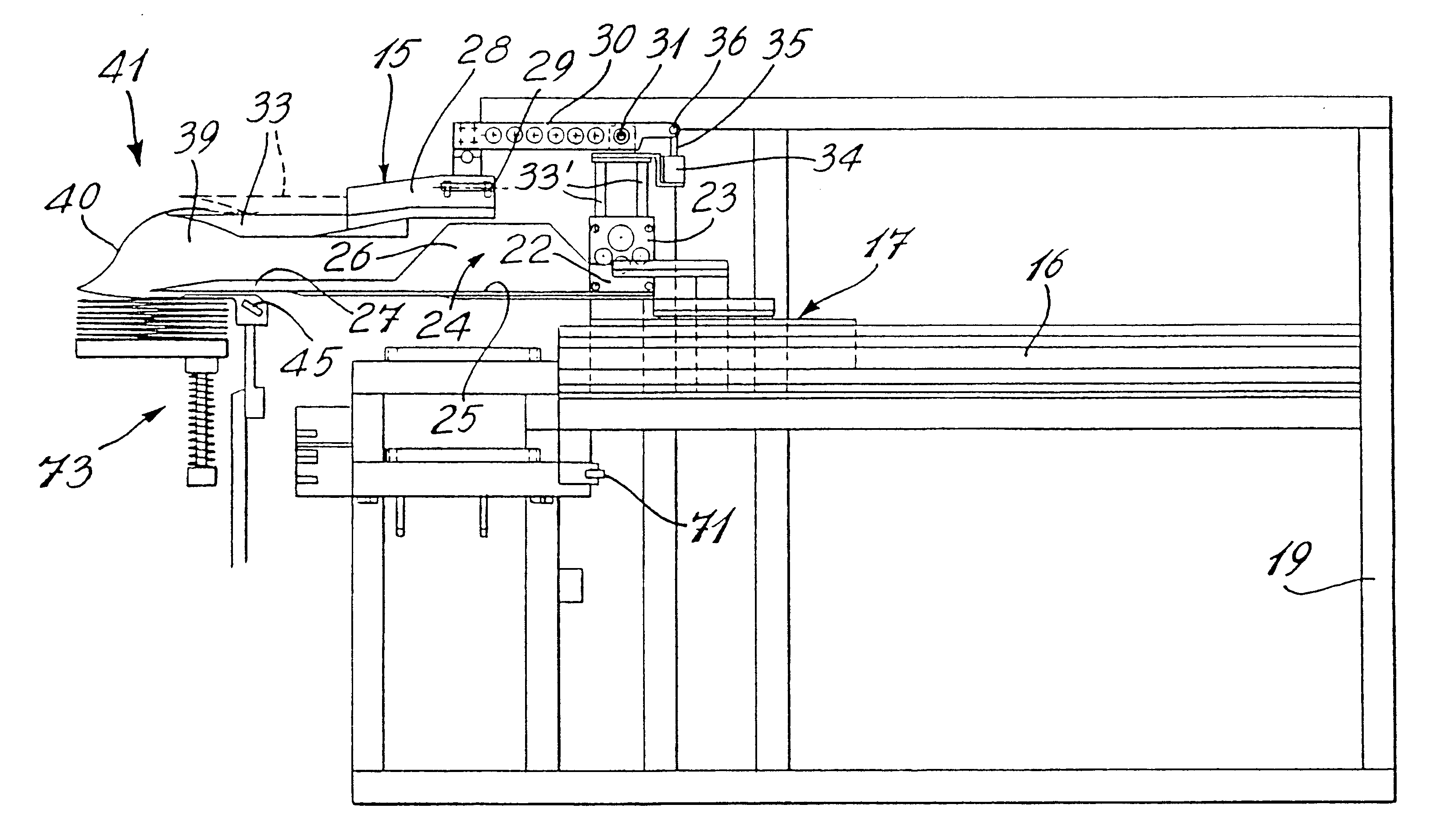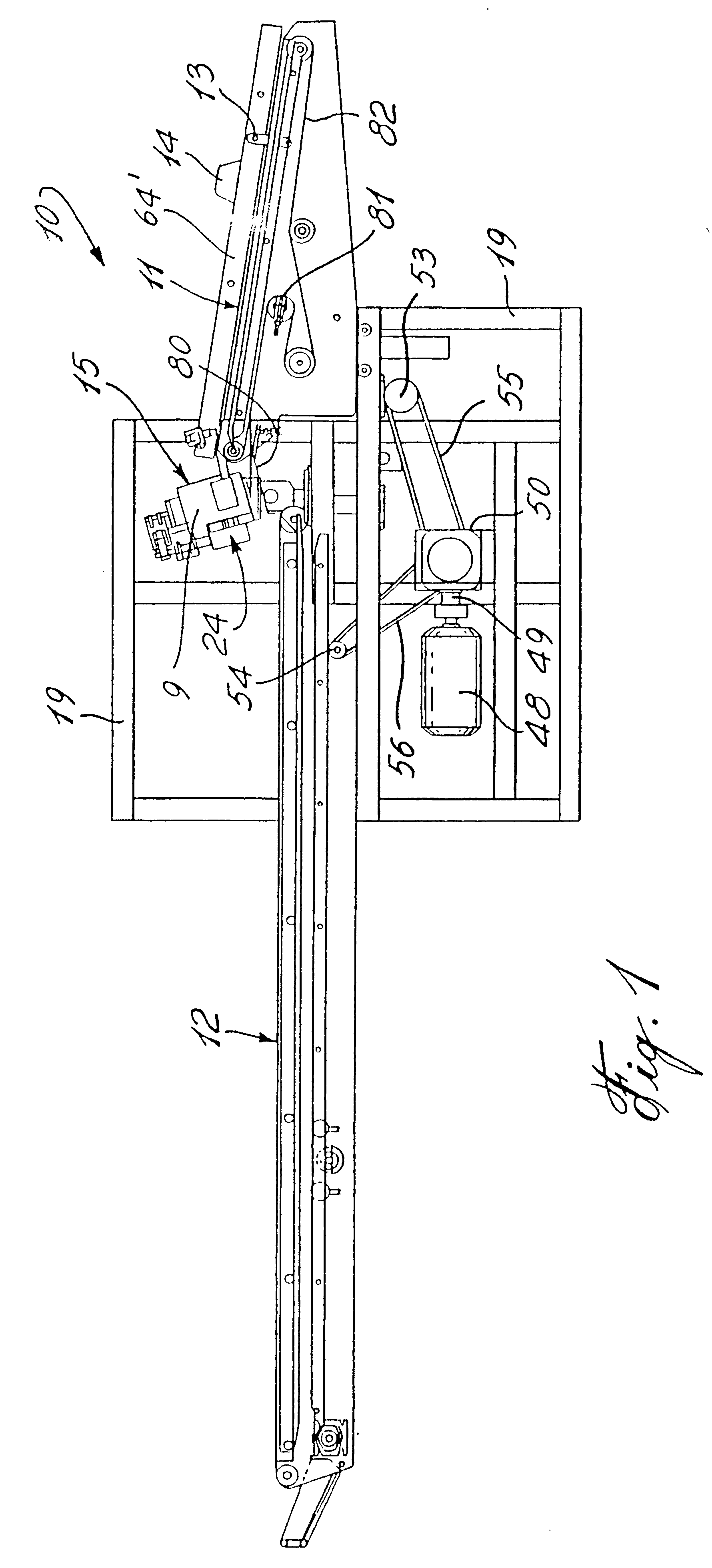High speed linear bagging machine and method of operation
a bagging machine and linear technology, applied in the direction of power operated devices, open-closed containers, packaged goods types, etc., can solve the problems of difficult to synchronize the associated reciprocating bagging device, the bag engagement element is difficult to be engaged, and the scoop position/timing cannot be optimized for different loaf sizes, etc., to achieve high speed, stable condition, and high speed
- Summary
- Abstract
- Description
- Claims
- Application Information
AI Technical Summary
Benefits of technology
Problems solved by technology
Method used
Image
Examples
Embodiment Construction
Referring now to the drawings and more particularly to FIGS. 1 and 2, there is shown generally at 10 the high speed linear bagging machine of the present invention and herein including a linear bagger assembly 15, an infeed conveyor 11 and a discharge conveyor 12. The infeed conveyor 11 is provided with pusher rods 13 which convey a product, herein a loaf of sliced bread 14, to a bagging station 9.
As seen more clearly in FIGS. 2A to 4, the bagging machine 10 comprises a reciprocating linear bagger assembly 15 which is herein displaceable on a straight slide support rod 16. The slide support rod 16 is a magnetic stator of a linear drive device 7. The linear drive device is provided with a thrust block 17 displaceable on the rod 16 by two electric coils 8 and 8' and housed in the housings 17' and 17", thereunder (see FIG. 2B). The thrust block 17 herein constitutes a carriage for the reciprocating linear bagger 15. By controlling the current through one of the coils the carriage is di...
PUM
| Property | Measurement | Unit |
|---|---|---|
| Length | aaaaa | aaaaa |
| Pressure | aaaaa | aaaaa |
| Speed | aaaaa | aaaaa |
Abstract
Description
Claims
Application Information
 Login to View More
Login to View More - R&D
- Intellectual Property
- Life Sciences
- Materials
- Tech Scout
- Unparalleled Data Quality
- Higher Quality Content
- 60% Fewer Hallucinations
Browse by: Latest US Patents, China's latest patents, Technical Efficacy Thesaurus, Application Domain, Technology Topic, Popular Technical Reports.
© 2025 PatSnap. All rights reserved.Legal|Privacy policy|Modern Slavery Act Transparency Statement|Sitemap|About US| Contact US: help@patsnap.com



